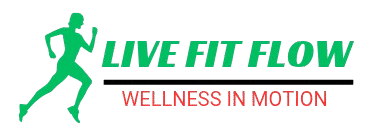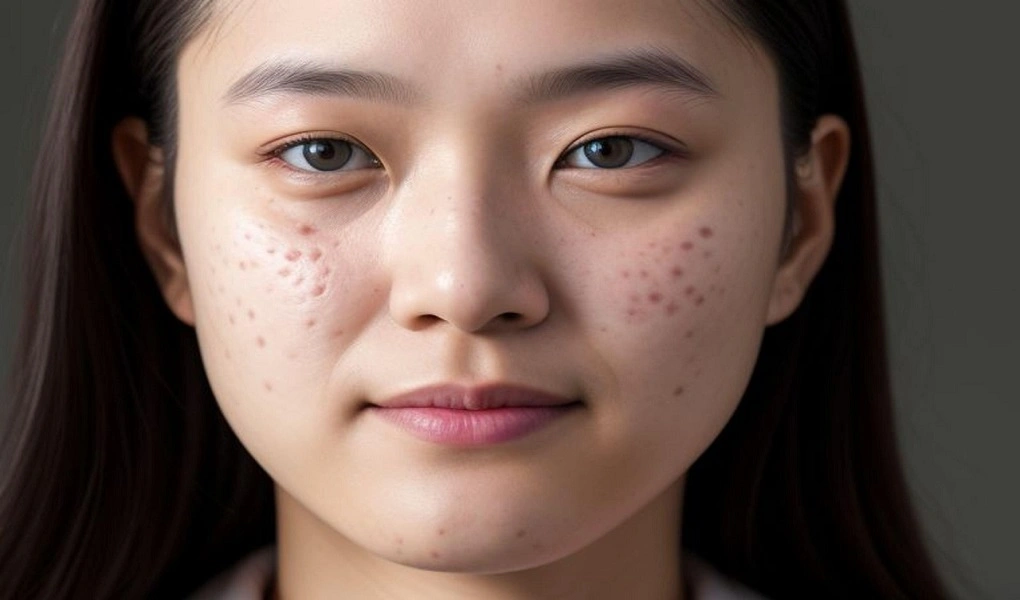Acne and pimples are common skin conditions that can affect adults as well as teenagers. This problem is mainly caused by excess oil production in the skin, accumulation of dead cells, bacterial infection, and hormonal imbalance.
Pimples are tiny bumps that appear on the skin’s surface. They can swell and change their color. These pimples usually cause pimples, which usually occur on your face, chest, shoulders, and upper back of the body.
What are pimples?
Pimples are a common skin problem that occurs when the oil glands of your skin become blocked, inflamed, or infected with acne-causing bacteria. They are one of the signs of acne and can come in a variety of shapes and sizes, including blackheads, whiteheads, cysts, and others. Pimples can be treated with home remedies, over-the-counter products, or even prescription medications depending on their severity.
What is Acne ?
Acne is a skin condition that occurs when your hair follicles become clogged with oil and dead skin cells. This leads to whiteheads, blackheads, or pimples. Acne affects people of all ages, but teenagers are most likely to get it.
Medical Treatments: “ Acne and Pimples—According to the American Academy of Dermatology, acne is one of the most common skin conditions in the U.S.”
There are acne treatments that work, but acne can stay.Pimples and acne tend to heal slowly, and there is a tendency for one of them to appear when one of them starts to go away, another one appears.
Depending on its severity, acne can cause emotional distress and leave scars on the skin. The likelihood of having such issues diminishes the sooner you begin treatment.
Main Causes of Acne in American Teenagers
1. Hormonal changes
During puberty, teens experience a rise in androgen hormones, which stimulates the sebaceous glands to produce excess oil (sebum). This oil clogs the pores, leading to acne. For teen girls, menstruation and hormonal fluctuations can also trigger acne.
2. Diet
Several studies suggest that high intake of sweet foods, dairy products, fast food, and food with a high glycemic index can aggravate acne. Sodas and energy drinks further increase blood sugar levels, which increases oil production.
3. Stress
Academic pressure, social media anxiety, and peer pressure often increase cortisol levels in teens, leading to hormonal imbalances and acne.
4. Improper skincare routine
Teenagers sometimes over-wash their face, use harsh scrubs, or wear heavy makeup that clogs pores. Using products not suitable for oily or acne-prone skin makes the condition worse.
5. Genetics
If one or both parents had acne, teens are more likely to develop it. Genetics can influence skin type, oil production, and inflammation levels.
6. Blue light exposure
Constant exposure to screens (smartphones, tablets, laptops) can increase oxidative stress on the skin, potentially increasing inflammation and acne
What’s the difference between acne and pimples?
Acne and Pimples- Acne is a disease and pimples can be a symptom of acne.
Causes of Acne and Pimples
1. Hormonal Changes
Due to hormonal changes in conditions like adolescence, pregnancy, menstruation or PCOD, the production of sebum increases which can cause pimples.
2. Oily Skin
Acne is more common in those with extremely oily skin.
3. Stress
Stress increases the cortisol hormone in the body, which makes the oil glands more active.
4. Poor Diet
Excess fried and sugary foods can increase pimples.
5. Improper Skincare Routine
Not cleaning the skin properly, sleeping with makeup and using the wrong products can also cause acne. Sometimes what happens is that we fall asleep as soon as we come out and forget to freshen up, this also harms the skin in a way because a lot of dust accumulates on the face.
6. Genetic Factors Acne and Pimples
It is also believed that if any member of your family has had the problem of pimples, then the chances of you getting affected also increases.
Types of Acne and Pimples
- Whiteheads (White Acne)
- Blackheads (Black Acne)
- Papules (Small swollen pimples)
- Pustules (Pus filled pimples)
- Nodules (Deep and painful pimples)
- Cystic Acne (a severe condition characterized by pus-filled pimples)
Symptoms of Acne
- Pimples or boils on face, back, neck and chest
- Pain or burning
- Redness or swelling on the skin
- Scars or blemishes
Latest Medical Treatments (US Approved 2025)
Topical Treatments:
- Benzoyl Peroxide (Clean & Clear, Neutrogena)
- Salicylic Acid (CeraVe, Paula’s Choice)
- Adapalene (Differin OTC)
Prescription Treatments:
- Oral Antibiotics: Doxycycline, Minocycline
- Hormonal Pills: Birth Control (for females)
- Spironolactone (for females with hormonal acne)
- Isotretinoin (Accutane) – under dermatologist supervision
Advanced Procedures:
- Laser Therapy
- LED Light Therapy (FDA approved devices: Tria, Foreo Espada)
- Chemical Peels
- Extraction (done by dermatologists)
Daily Skincare Routine for US Teens
| Step | Product Example |
|---|---|
| Cleanser | CeraVe Foaming Cleanser |
| Toner | The Ordinary Glycolic Toner |
| Serum | Paula’s Choice Salicylic Acid 2% |
| Moisturizer | Neutrogena Hydro Boost, La Roche-Posay |
| Sunscreen | EltaMD UV Clear SPF 46 |
Home Remedies (US audience adaptation)
Tea Tree Oil (The Body Shop, Amazon)
Aloe Vera Gel (Fresh or Aloe Vera Gel 99%)
Honey + Cinnamon Mask
Ice Compress (reduce swelling)
1. Multani Mitti Face Pack
Mix rose water in Multani Mitti and apply it on the face and leave it for some time, then wash it after it dries.
2. Neem Paste
Neem is considered a very good remedy for everything, so grind neem leaves and make a paste and apply it on pimples.
3. Aloe Vera Gel
Nowadays everyone has an aloe vera plant in their homes. So apply fresh aloe vera gel directly on pimples. It reduces inflammation.
4. Honey and Cinnamon Mask
Apply honey and cinnamon powder to the face and rinse after 10 to 15 minutes.
5. Ice Cubes
Wrap ice cubes in a cloth and apply it on pimples. It reduces swelling.
Medical Treatments for Acne
- Topical Creams: Benzoyl peroxide, Retinoids, Clindamycin
- Oral Medications: Antibiotics, Hormonal Pills
- Chemical Peels
- Laser Therapy
- Extraction Procedures (by dermatologist)
Diet Tips to Prevent Pimples- Acne and Pimples
- Eat fresh fruits and vegetables every day.
- Avoid junk food, chocolate and dairy as much as possible.
- Drink plenty of water, at least 4-5 liters a day.
- Include green leafy vegetables in your diet
- Reduce the amount of sugar and carbohydrates
Trending Tips from Celebrities & Influencers
Kylie Jenner: Consistent skincare routine.
Zendaya: Never sleeps with makeup.
Dermatologists recommend fragrance-free products
Myths vs Facts – Acne and Pimples
Myth: Eating chocolate causes pimples.
Fact: There is no direct relation, but eating too much sugar can cause pimples.
Myth: Washing face frequently is beneficial.
Fact: Washing too often makes the skin dry and produces more oil.
Myth: Only teenagers get pimples.
Fact: Adults can also get pimples due to hormonal changes.
Tips for US Teenage Boys & Girls
- Wash your face at least twice a day
- Don’t pick or pop pimples.
- Excessive exposure to the skin can cause pimples.
- Do not touch your skin too much
- Remove makeup before sleeping at night
- Use products according to your skin type
Treatment of Acne Scars
- Vitamin C Serum (SkinCeuticals, TruSkin)
- Chemical Peeling
- Microdermabrasion
- Laser Treatment by a Dermatologist
Prevention Tips—Acne and Pimples
- Change pillow covers regularly
- Keep your mobile screen clean
- Do not touch your face frequently
- Have a healthy diet and get enough sleep
What should I avoid drinking or eating if I have acne?
Healthcare providers and researchers once believed that certain foods could contribute to pimple development, especially diets high in skimmed milk, whey protein and sugar, chocolate, etc. However, this may not be true. The connection between acne and diet is unclear.
However, certain vitamins may aid in the prevention of pimples by promoting healthy skin. What your diet includes:
Vitamin A: Vitamin A can be found in a variety of foods, including tomatoes, orange and yellow vegetables, fish, liver, leafy green vegetables, and other fruits and vegetables.
Vitamin D: Good sources of vitamin D include fatty fish (mackerel, salmon, trout and tuna) and vitamin-fortified foods, including dairy and nondairy milk, breakfast cereals and orange juice.
Vitamin E: Nuts, seeds, leafy green vegetables, and vegetable oils are all good sources of vitamin E.
FAQ Section
Q: What is the best acne treatment for teenagers?
A: Benzoyl peroxide, salicylic acid, adapalene (Differin), and a proper skincare routine.
Q: Does diet affect acne?
A: High sugar, dairy, and processed food may trigger acne flare-ups.
Q: When to see a dermatologist?
A: If acne is moderate-to-severe or causing emotional distress.
Q: Can acne leave permanent scars?
A: Yes, especially if not treated early.
Final Thoughts—Acne and Pimples
Acne is as common as its solutions are available. What is important is the right information, regular care and patience. If home remedies do not provide relief, then definitely contact a dermatologist.
“If your condition worsens or doesn’t improve with home remedies, it’s important to consult a doctor for proper diagnosis and treatment.”
Read More->
Amazing Benefits of Drinking Warm Lemon Water in the Morning

